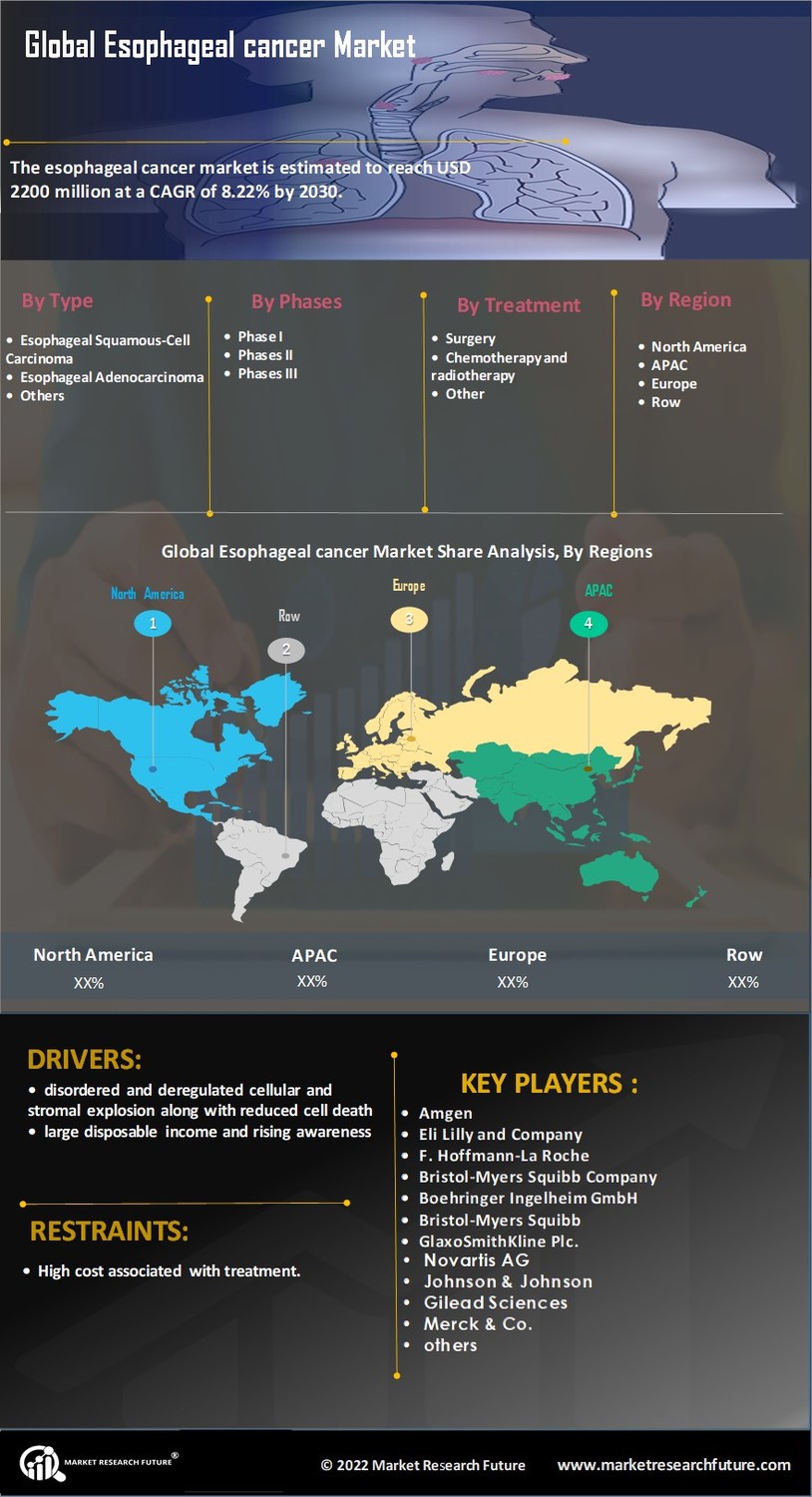Market Growth Projections
The Global Esophageal Cancer Market Industry is projected to experience substantial growth over the next decade. In 2024, the market is valued at 15.3 USD Billion, with expectations to reach 36.6 USD Billion by 2035. This growth trajectory indicates a compound annual growth rate of 8.23% from 2025 to 2035. Factors contributing to this expansion include advancements in treatment options, increased awareness, and rising incidence rates. As the market evolves, stakeholders are likely to focus on innovative solutions to improve patient outcomes and address the challenges posed by this complex disease.
Advancements in Treatment Modalities
Innovations in treatment modalities are significantly influencing the Global Esophageal Cancer Market Industry. The introduction of targeted therapies, immunotherapies, and minimally invasive surgical techniques has transformed patient outcomes. For instance, the development of immune checkpoint inhibitors has shown promising results in clinical trials, leading to improved survival rates. As the market evolves, it is anticipated that these advancements will contribute to a projected market value of 36.6 USD Billion by 2035. This growth indicates a shift towards personalized medicine, where treatments are tailored to individual patient profiles, enhancing efficacy and reducing side effects.
Emerging Markets and Economic Growth
Emerging markets are playing a pivotal role in the expansion of the Global Esophageal Cancer Market Industry. Countries with developing economies are witnessing a rise in the incidence of esophageal cancer, driven by lifestyle changes and urbanization. As these nations experience economic growth, there is an increasing demand for healthcare services, including cancer treatment. This trend is expected to contribute to a compound annual growth rate of 8.23% from 2025 to 2035. The growing middle class in these regions is likely to enhance access to healthcare, further propelling market growth as more patients seek treatment.
Rising Incidence of Esophageal Cancer
The Global Esophageal Cancer Market Industry is experiencing growth driven by the increasing incidence of esophageal cancer worldwide. According to the World Health Organization, esophageal cancer ranks as the sixth most common cause of cancer-related deaths globally. The rising prevalence is attributed to factors such as smoking, alcohol consumption, and dietary habits. In 2024, the market is projected to reach 15.3 USD Billion, reflecting a heightened demand for effective treatment options and diagnostic tools. This trend suggests that healthcare systems are likely to invest more in research and development to address the growing burden of this disease.
Increased Awareness and Screening Programs
The Global Esophageal Cancer Market Industry is benefiting from increased awareness and screening programs aimed at early detection. Public health initiatives and campaigns have been instrumental in educating populations about risk factors and symptoms associated with esophageal cancer. For example, organizations are promoting screening for high-risk groups, which can lead to earlier diagnosis and better treatment outcomes. This proactive approach is likely to drive market growth, as early detection is crucial for improving survival rates. Consequently, the industry is expected to expand as more individuals seek diagnostic services and treatment options.
Growing Investment in Research and Development
Investment in research and development is a key driver of the Global Esophageal Cancer Market Industry. Governments and private entities are increasingly funding studies focused on understanding the molecular mechanisms of esophageal cancer and developing novel therapeutic agents. This trend is evident in the rising number of clinical trials aimed at evaluating new drugs and treatment strategies. The commitment to advancing scientific knowledge is likely to enhance the market landscape, fostering innovation and leading to the introduction of more effective therapies. As a result, the industry is poised for substantial growth in the coming years.

















Leave a Comment